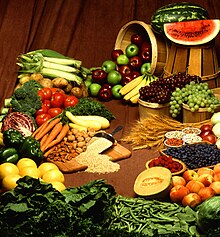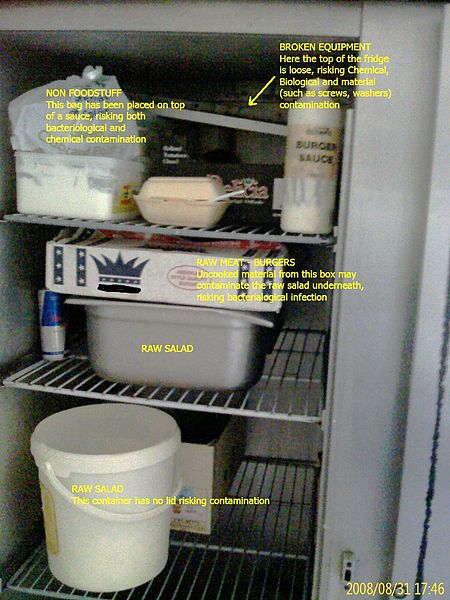Food disinfection
That is the question: Can and should be
disinfected foods with chlorine dioxide
solutions ?
Germ growth a problem?
Germ growth
Wissenskiste-Keimwachstum
http://wirkungvondesinfektionsmitteln.blogspot.de/p/1-httpwww.html
Can you give a answer?
This post is intended to stimulate discussion about the applications of chlorine dioxide solutions for disinfection of food and, in related appliances, equipment, facilities, vehicles, bearings.
The following information is merely to provide a basis for discussion.
What is food?
What diseases can be caused by contaminated food?
Are suitable chlorine dioxide solutions to eliminate pathogenic germs food?
This information can be found in http://en.wikipedia.org/wiki/Food


I was looking for chlorine dioxide solutions that are classified and listed in the biocidal group PT4. Here I found in the CtgB (Netherlands) is listed Twin Oxide Oxide-Solutions (see following picture):
In the following section you will find information about germs that can cause food-borne disease (http://en.wikipedia.org/wiki/Foodborne_illness )

That is the question: Can and should be
disinfected foods with chlorine dioxide
solutions ?
That is the question: Can and should be
disinfected foods with chlorine dioxide
solutions ?
Germ growth a problem?
Germ growth
Wissenskiste-Keimwachstum
http://wirkungvondesinfektionsmitteln.blogspot.de/p/1-httpwww.html
Can you give a answer?
This post is intended to stimulate discussion about the applications of chlorine dioxide solutions for disinfection of food and, in related appliances, equipment, facilities, vehicles, bearings.
The following information is merely to provide a basis for discussion.
What is food?
What diseases can be caused by contaminated food?
Are suitable chlorine dioxide solutions to eliminate pathogenic germs food?
This information can be found in http://en.wikipedia.org/wiki/Food
Food is any substance[1] consumed to provide nutritional
support for the body. It is usually of plant or animal origin, and contains essentialnutrients, such as carbohydrates, fats, proteins, vitamins, or minerals. The substance is ingested by an organism and assimilated by the organism's cells in an effort to produce energy, maintain
life, or stimulate growth.
Historically, people secured food through two methods: hunting and gathering, and agriculture. Today, most of the food energy consumed by the world population is supplied by the food industry.
Food safety and food security are monitored by agencies like the International Association for Food Protection, World
Resources Institute,World Food
Programme, Food and
Agriculture Organization, and International
Food Information Council. They address
issues such assustainability, biological
diversity, climate change, nutritional
economics, population growth, water supply, and access to food.
The right to food is a human right derived from the International Covenant on Economic, Social and Cultural
Rights (ICESCR), recognizing the
"right to an adequate standard of living, including adequate food,"
as well as the "fundamental right to be free from hunger."


I was looking for chlorine dioxide solutions that are classified and listed in the biocidal group PT4. Here I found in the CtgB (Netherlands) is listed Twin Oxide Oxide-Solutions (see following picture):
In the following section you will find information about germs that can cause food-borne disease (http://en.wikipedia.org/wiki/Foodborne_illness )

Foodborne illness
From Wikipedia, the free encyclopedia
Foodborne illness (also foodborne
disease and colloquially referred to as food poisoning)[1] is any illness resulting from the consumption ofcontaminated food, pathogenic bacteria, viruses,
or parasites that contaminate food,[2] as well as chemical or natural toxins such
as poisonous mushrooms.
Symptoms vary
depending on the cause, and are described below in this article. A few broad
generalizations can be made, e.g.: The incubation period ranges from hours to
days, depending on the cause and on how much was consumed. The incubation
period tends to cause sufferers to not associate the symptoms with the item
consumed, and so to cause sufferers to attribute the symptoms to stomach flu for example. Symptoms often
include vomiting, fever, and aches, and may include diarrhea. Bouts of vomiting
can be repeated, with an extended delay in between, because even if infected
food was eliminated from the stomach in the first bout, microbes (if applicable) can have passed
through thestomach into the intestine, attached to the cells lining the intestinal walls, and
begun to multiply there. Some types of microbes stay in the intestine, some
produce a toxin that is absorbed into the bloodstream,
and some can directly invade deeper body tissues.
Contents
·
1 Causes
See
also: Pathogen
Poorly
stored food in a refrigerator
Foodborne illness
usually arises from improper handling, preparation, or food storage. Good hygiene practices before, during, and
after food preparation can reduce the chances of contracting an illness. There
is a consensus in the public health community that regular hand-washing is one
of the most effective defenses against the spread of foodborne illness. The
action of monitoring food to ensure that it will not cause foodborne illness is
known as food safety.
Foodborne disease can also be caused by a large variety of toxins that affect
the environment. For foodborne illness caused by chemicals, see Food contaminants.
Foodborne illness can
also be caused by pesticides or medicines in food and naturally toxic
substances such as poisonous mushrooms or reef fish.
disinfected foods with chlorine dioxide
solutions ?

No comments:
Post a Comment